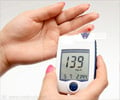Glossary
Aerobic exercise: Physical exercise that intends to improve the oxygen systemBody mass index: The body weight divided by the height squared (wt/ht2). Its an indicator of optimal weight for health and different from lean mass or percent body fat calculations because it only considers height and weight
Bodybuilding: Its a form of body modification, involving an individual who engages in strenuous strengthening exercise
Body Composition: The ratio of lean body mass composing of functional elements in cells, body water, muscle, bone, heart, liver, kidneys, etc.) to body fat
Homeostasis: Body's ability to regulate the inner environment physiologically to ensure body's stability in response to fluctuations in the outside environment and the weather.
Cholesterol: Substance manufactured by the body and used in the production of hormones, bile acid, and vitamin D. It is present in all the parts of the body, including the nervous system, muscle, skin, liver, intestines, and heart.
Metabolism: The set of chemical reactions in living organisms that provide energy to maintain life and carry out physiological functions
Thermogenesis: Its the process of heat production in living organisms.
Lean body mass: Mass of the body minus the fat
Insulin: Its a hormone which regulates carbohydrate and fat metabolism in the body. Insulin directs the absorption and storage of glucose in the blood in the form of glycogen in the liver and muscle.
Basal Body temperature: Temperature of our body when it is at rest.
Anerobic Exercise: Intense strength training exercise triggering anaerobic metabolism in the muscular cells resulting in promotion of strength, speed and power and increase of muscle mass.
Basal Metabolic rate: The minimal caloric requirement needed to sustain life in an individual at rest.
Weight Training: Exercises involving loss of weight, increasing metabolism and improving overall strength and fitness
Oxygen consumption: The rate at which oxygen is consumed by the tissues.
Diabetes: Metabolic disease in which the blood sugar levels increase in an individual, either because of decrease in insulin production, or because the body cells stop responding to insulin. Classical symptoms of diabetes are frequent urination, increased thirst and increased hunger.
Obesity: Accumulation of excess body fat posing a threat to a person's health profile
Total energy expenditure: The total amount of energy needed to maintain the body's needs at rest and while performing daily activities
Abdominal Fat: Fat centrally distributed between the thorax and pelvis









